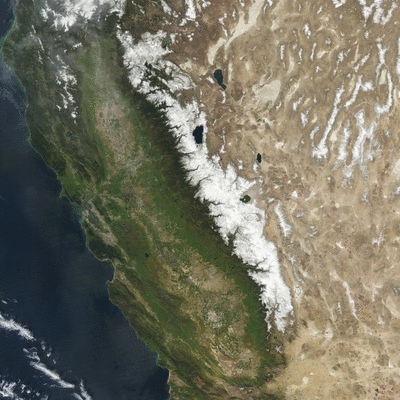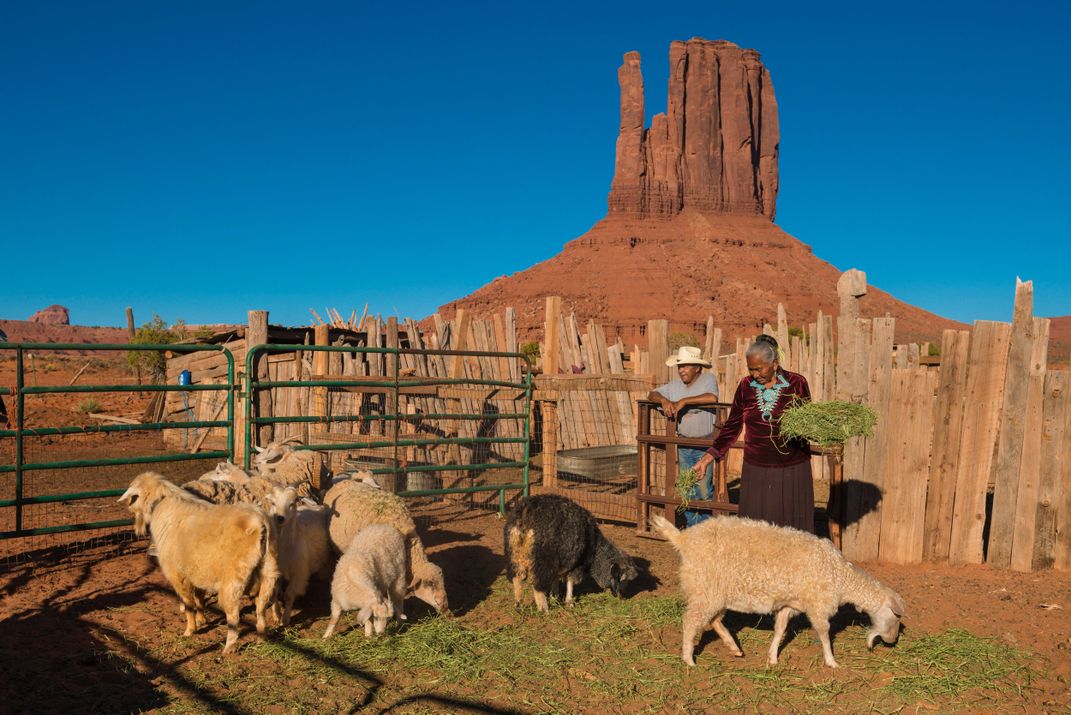How Will Native Americans in the Southwest Adapt to Serious Impacts of Climate Change?
A drying landscape and changing water regime are already affecting tribal lands
/https://tf-cmsv2-smithsonianmag-media.s3.amazonaws.com/filer/40/36/4036c853-a640-4ed4-a70e-533f55f7c04e/42-51058272.jpg)
Around the world, indigenous peoples are among the most vulnerable to the effects of climate change. That is true, too, in the United States. Coastal native villages in Alaska have already been inundated with water due to melting permafrost and erosion, and the Biloxi-Chitimacha-Choctaw Indians of Louisiana recently announced plans to resettle on higher ground after losing 98 percent of their lands since 1950 to rising sea levels.
But leaving traditional lands is not an option for many Native Americans. In some ways, they have the same migration opportunities as anyone, but these peoples often have a profound relationship with the land and leaving it can mean losing traditional native culture, Derek Kauneckis, a political scientist at Ohio University's Voinovich School of Leadership and Public Affairs, said this past weekend at the 2016 meeting of the American Association for the Advancement of Science (AAAS) in Washington, D.C. He and three other experts presented their research in a symposium on “Climate, Water and the American Indian Farmer.”
Scientists are trying to identify how these tribes will be affected by climate change, and how they can not only adapt to that change but even thrive in the face of it, Kauneckis says.
For those tribes living in the American Southwest, that means dealing with warmer temperatures, longer droughts and decreasing water supplies, notes Maureen McCarthy, executive director of the Academy for the Environment at the University of Nevada, Reno.

The southwest region is shifting into a drier pattern as wet weather systems have become rarer, scientists recently reported in Geophysical Research Letters. And researchers reported last year that the western United States could face a megadrought by the end of the century. But an even bigger problem is that as temperatures rise, more precipitation is falling as rain instead of snow. Normally winter precipitation builds snowpack in the Rockies that feeds streams in warmer months when rain is scarce. When the snowpack is smaller than average, there can be less water available. New patterns in storms and extreme weather can result in catastrophic flooding—water that is not useful. And rising temperatures also means that more of that water is lost to evaporation, leaving even less for people to use.
Already these conditions are affecting Native American tribes in different ways, says Karletta Chief, a hydrologist at the University of Arizona and a member of the Navajo nation. A loss of soil moisture on Navajo lands in northeastern Arizona, for instance, caused sand dunes to inundate homes, she notes. And the Hualapai of Arizona had to sell much of their livestock during the most recent drought.

While these problems face everyone in the Southwest, Native American communities have unique vulnerabilities. One of these is a complex system of land ownership, notes Loretta Singletary, an economist at the University of Nevada, Reno. On these “checkerboard lands”—where patches of land may be owned by tribes, individual tribal members or non-Native Americans—it can be difficult to know who has authority to act and make decisions about land and water.
In addition, many Native American lands have been divvied up into parcels that now, generations after they were established, have dozens of heirs that all have interest in the land. Decision-making becomes inefficient, Singletary says, and it can be impossible to manage the land’s resources sustainably.
But other laws dating to the 1800s, those dealing with water, may be an advantage for Native Americans in the Southwest. “Water means something totally different west of the Mississippi,” McCarthy says. “Water is a valuable commodity.”
Unlike in the eastern United States, water laws in the region are based on two basic principles: “First in line, first in right,” McCarthy quips, and “use it or lose it.” The older a claim is, the more water that user gets, she explains. And those who don’t make use of all of their rights can lose them.
A 1908 Supreme Court decision, known as the Winters Doctrine, established that Native Americans have some of the oldest water rights in the United States. However, most of the communities have yet to have those rights legally quantified, something that usually requires litigation, Singletary notes. Plus, water laws usually reserve water only for agriculture. Other uses, such as providing drinking water or keeping streams and lakes full enough for fish, aren’t considered. This is a “major challenge” for these communities, she says.
Managing water is incredibly important in these communities. “To us, water is sacred,” Chief says. But many Native Americans lack access to clean water, including some 40 percent of Navajo. Chief herself didn’t live in a place where water came out of a faucet until she went to college. People may travel up to 40 miles away to fill up huge drums that will last a few weeks. Others may have wells, but these are often drawing from shallow aquifers that are the first to dry up in a drought.
Native Americans, with their long history, can be a rich source of traditional knowledge on past environmental conditions and how to survive in difficult times, Chief notes. In California, for instance, the U.S. Forest Service is working with tribal members to reinstitute traditional burning practices for better fire and land management in the face of drought. Scientists are now starting to work with native communities to draw on that knowledge and develop adaptation strategies for the future, such as diversifying crops and the local economy, conserving water and providing better education for the younger generation.
The Native Waters on Arid Lands project, for instance, is bringing together researchers, native communities and government officials to address water issues for sustainable agriculture. Another project is looking more closely at issues faced by the Pyramid Lake Paiute Tribe in Nevada, which depends on water from the Truckee River.
The Smithsonian National Museum of the American Indian is also collaborating with the Indigenous Peoples' Climate Change Working Group, a national consortium of tribal colleges that is working to ensure that tribal knowledge of changing landscapes and climates is a part of education and research progams, notes Jose Barreiro, the museum's assistant director for research.
“Tribes have been resilient,” Chief says. “They have been able to survive different challenges with the environment through adaptation, and so there is opportunity for them to continue doing so.”
/https://tf-cmsv2-smithsonianmag-media.s3.amazonaws.com/accounts/headshot/Sarah-Zielinski-240.jpg)
/https://tf-cmsv2-smithsonianmag-media.s3.amazonaws.com/accounts/headshot/Sarah-Zielinski-240.jpg)